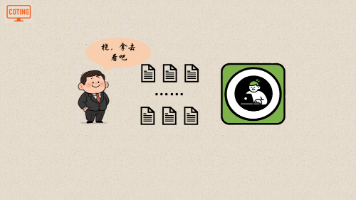HarmonyOS父子组件通信全攻略:DevEco Studio中的8种通信方式 V1
本文系统介绍了HarmonyOS应用开发中父子组件通信的多种方式,包括基础通信(@Prop单向数据流、@Link双向绑定)、高级通信(@Provide/@Consume跨层级、事件回调)、全局状态管理(AppStorage)以及复杂场景解决方案(EventEmitter事件广播、@Watch监听)。文章通过代码示例详细演示了每种方式的使用场景和实现方法,并提供了购物车组件等实战案例,最后总结了通信
在HarmonyOS应用开发中,组件化架构是构建复杂应用的基础。父子组件之间的高效通信直接影响应用的性能、可维护性和开发体验。本文将全面解析DevEco Studio中父子组件通信的各种方式,帮助你构建更加灵活和可复用的组件架构。
一、组件通信的重要性
在现代前端框架中,组件通信是核心概念之一。良好的通信机制可以:
-
•提高组件复用性
-
•降低代码耦合度
-
•简化状态管理
-
•提升应用性能
二、基础通信方式
1. @Prop:单向数据流(父 → 子)
适用场景:父组件向子组件传递数据,子组件不能直接修改
// 子组件 ChildComponent.ets
@Component
struct ChildComponent {
@Prop message: string; // 使用@Prop接收数据
build() {
Column() {
Text(this.message)
.fontSize(20)
.margin(10)
}
}
}
// 父组件 ParentComponent.ets
@Entry
@Component
struct ParentComponent {
@State parentMessage: string = 'Hello from Parent';
build() {
Column() {
// 传递数据给子组件
ChildComponent({ message: this.parentMessage })
Button('更改消息')
.onClick(() => {
this.parentMessage = '消息已更新: ' + Date.now();
})
.margin(10)
}
}
}
2. @Link:双向数据绑定(父 ↔ 子)
适用场景:需要子组件修改数据并同步到父组件
// 子组件 InputComponent.ets
@Component
struct InputComponent {
@Link inputValue: string; // 使用@Link建立双向绑定
build() {
Column() {
TextInput({ text: this.inputValue })
.onChange((value: string) => {
this.inputValue = value; // 修改会自动同步到父组件
})
.width('90%')
.margin(10)
}
}
}
// 父组件 FormPage.ets
@Entry
@Component
struct FormPage {
@State userName: string = '';
build() {
Column() {
Text('当前用户名: ' + this.userName)
.fontSize(18)
.margin(10)
// 双向绑定userName
InputComponent({ inputValue: $userName })
Button('清空输入')
.onClick(() => {
this.userName = ''; // 修改会同步到子组件
})
.margin(10)
}
}
}
3. 常规参数传递(无装饰器)
适用场景:传递不需要响应式的静态数据
// 子组件 Avatar.ets
@Component
struct Avatar {
private imageUrl: string; // 普通变量,无装饰器
private size: number;
build() {
Column() {
Image(this.imageUrl)
.width(this.size)
.height(this.size)
.borderRadius(this.size / 2)
}
}
}
// 父组件 UserProfile.ets
@Entry
@Component
struct UserProfile {
build() {
Column() {
Avatar({
imageUrl: '/common/avatar.png',
size: 100
})
}
}
}
三、高级通信方式
4. @Provide和@Consume:跨层级通信
适用场景:祖先组件向后代组件传递数据,避免逐层传递
// 祖先组件 AncestorComponent.ets
@Entry
@Component
struct AncestorComponent {
@Provide themeColor: string = 'blue'; // 提供数据
build() {
Column() {
Text('祖先组件')
.fontColor(this.themeColor)
MiddleComponent() // 中间可能有多层组件
}
}
}
// 中间组件(不需要传递props)
@Component
struct MiddleComponent {
build() {
Column() {
ChildComponent()
}
}
}
// 后代组件 ChildComponent.ets
@Component
struct ChildComponent {
@Consume themeColor: string; // 消费数据
build() {
Column() {
Text('后代组件')
.fontColor(this.themeColor)
Button('切换主题')
.onClick(() => {
this.themeColor = this.themeColor === 'blue' ? 'red' : 'blue';
})
}
}
}
5. 事件回调(子 → 父)
适用场景:子组件向父组件发送事件或数据
// 子组件 SearchBar.ets
@Component
struct SearchBar {
private onSearch: (keyword: string) => void; // 回调函数
@State keyword: string = '';
build() {
Row() {
TextInput({ text: this.keyword })
.onChange((value: string) => {
this.keyword = value;
})
.width('70%')
Button('搜索')
.onClick(() => {
// 触发父组件回调
this.onSearch(this.keyword);
})
.width('30%')
}
.padding(10)
}
}
// 父组件 ProductList.ets
@Entry
@Component
struct ProductList {
@State searchKeyword: string = '';
build() {
Column() {
SearchBar({
onSearch: (keyword: string) => {
this.handleSearch(keyword);
}
})
List() {
// 产品列表渲染...
}
}
}
private handleSearch(keyword: string) {
console.log('搜索关键词:', keyword);
this.searchKeyword = keyword;
// 执行搜索逻辑...
}
}
四、全局状态管理
6. 使用AppStorage进行全局状态管理
适用场景:多个无关组件需要共享状态
// 定义全局状态
AppStorage.SetOrCreate('globalUser', { name: '张三', age: 25 });
// 组件A ComponentA.ets
@Component
struct ComponentA {
@StorageLink('globalUser') user: Object; // 关联全局状态
build() {
Column() {
Text('用户: ' + this.user.name)
.fontSize(18)
Button('修改用户')
.onClick(() => {
this.user = { name: '李四', age: 30 };
})
}
}
}
// 组件B ComponentB.ets
@Component
struct ComponentB {
@StorageLink('globalUser') user: Object; // 同样关联全局状态
build() {
Column() {
Text('年龄: ' + this.user.age)
.fontSize(18)
}
}
}
五、复杂场景解决方案
7. 使用EventEmitter进行事件广播
适用场景:组件间松散耦合的事件通信
// 事件管理器 EventManager.ets
export class EventEmitter {
private static events: Map<string, Function[]> = new Map();
// 监听事件
static on(event: string, callback: Function) {
if (!this.events.has(event)) {
this.events.set(event, []);
}
this.events.get(event)?.push(callback);
}
// 触发事件
static emit(event: string, data?: any) {
const callbacks = this.events.get(event);
callbacks?.forEach(callback => {
callback(data);
});
}
// 移除监听
static off(event: string, callback?: Function) {
if (!callback) {
this.events.delete(event);
} else {
const callbacks = this.events.get(event);
if (callbacks) {
const index = callbacks.indexOf(callback);
if (index > -1) {
callbacks.splice(index, 1);
}
}
}
}
}
// 发布者组件 Publisher.ets
@Component
struct Publisher {
build() {
Column() {
Button('发布事件')
.onClick(() => {
EventEmitter.emit('dataUpdated', {
time: new Date(),
message: '数据已更新'
});
})
}
}
}
// 订阅者组件 Subscriber.ets
@Component
struct Subscriber {
@State message: string = '等待数据...';
aboutToAppear() {
// 订阅事件
EventEmitter.on('dataUpdated', (data: any) => {
this.message = `收到数据: ${data.message} at ${data.time}`;
});
}
aboutToDisappear() {
// 清理订阅
EventEmitter.off('dataUpdated');
}
build() {
Column() {
Text(this.message)
.fontSize(16)
}
}
}
8. 使用@Watch监听数据变化
适用场景:需要在数据变化时执行特定逻辑
@Component
struct FormValidator {
@Link @Watch('onEmailChange') email: string;
@State errorMessage: string = '';
// 监听email变化
onEmailChanged() {
if (!this.validateEmail(this.email)) {
this.errorMessage = '邮箱格式不正确';
} else {
this.errorMessage = '';
}
}
private validateEmail(email: string): boolean {
const regex = /^[^\s@]+@[^\s@]+\.[^\s@]+$/;
return regex.test(email);
}
build() {
Column() {
TextInput({ text: this.email })
.onChange((value: string) => {
this.email = value;
})
.width('100%')
if (this.errorMessage) {
Text(this.errorMessage)
.fontSize(14)
.fontColor('red')
}
}
}
}
六、最佳实践和性能优化
1. 选择合适的通信方式
| 场景 | 推荐方式 | 说明 |
|---|---|---|
| 简单数据传递 | @Prop | 单向数据流,性能最好 |
| 表单双向绑定 | @Link | 数据双向同步 |
| 跨层级传递 | @Provide/@Consume | 避免prop逐层传递 |
| 全局状态 | AppStorage | 多个组件共享状态 |
| 事件通知 | EventEmitter | 松散耦合的事件通信 |
2. 避免常见陷阱
问题:不必要的重新渲染
// 错误示例:每次父组件更新都会导致子组件重新渲染
@Component
struct ChildComponent {
@Prop data: object;
build() {
// 即使data内容没变,也会重新渲染
}
}
// 优化方案:使用浅比较或不可变数据
@Component
struct OptimizedChild {
@Prop data: object;
// 使用aboutToUpdate进行优化
aboutToUpdate() {
if (JSON.stringify(this.data) === JSON.stringify(this.previousData)) {
// 数据未变化,避免重新渲染
}
}
}
3. 内存管理最佳实践
@Component
struct EventComponent {
aboutToAppear() {
// 订阅事件
EventEmitter.on('update', this.handleUpdate);
}
aboutToDisappear() {
// 必须取消订阅,避免内存泄漏
EventEmitter.off('update', this.handleUpdate);
}
private handleUpdate = (data: any) => {
// 使用箭头函数绑定this
this.processData(data);
}
}
七、实战案例:购物车组件
// 商品组件 ProductItem.ets
@Component
struct ProductItem {
@Prop product: Product;
@Link cartItems: Product[];
build() {
Row() {
Image(this.product.image)
.width(80)
.height(80)
Column() {
Text(this.product.name)
.fontSize(16)
Text(`¥${this.product.price}`)
.fontColor('#ff5000')
}
.layoutWeight(1)
Button('加入购物车')
.onClick(() => {
this.addToCart();
})
}
.padding(10)
}
private addToCart() {
const newCart = [...this.cartItems];
newCart.push(this.product);
this.cartItems = newCart;
}
}
// 购物车组件 ShoppingCart.ets
@Component
struct ShoppingCart {
@Link cartItems: Product[];
build() {
Column() {
Text(`购物车 (${this.cartItems.length})`)
.fontSize(18)
List() {
ForEach(this.cartItems, (item: Product) => {
ListItem() {
Text(item.name)
}
})
}
.height(200)
}
}
}
// 父组件 ProductList.ets
@Entry
@Component
struct ProductList {
@State products: Product[] = [
{ id: 1, name: '商品A', price: 100, image: 'image1.png' },
{ id: 2, name: '商品B', price: 200, image: 'image2.png' }
];
@State cartItems: Product[] = [];
build() {
Column() {
// 商品列表
List() {
ForEach(this.products, (product: Product) => {
ListItem() {
ProductItem({
product: product,
cartItems: $cartItems
})
}
})
}
.layoutWeight(1)
// 购物车
ShoppingCart({ cartItems: $cartItems })
}
}
}
八、总结
父子组件通信是HarmonyOS应用开发的核心技能,掌握各种通信方式能够帮助你:
-
1.构建可复用组件:通过合理的props设计提高组件复用性
-
2.实现高效数据流:选择合适的数据传递方式优化性能
-
3.管理复杂状态:使用全局状态管理解决跨组件数据共享
-
4.处理事件通信:通过事件机制实现组件间松散耦合
选择建议:
-
•简单场景:优先使用@Prop和@Link
-
•跨层级通信:使用@Provide/@Consume
-
•全局状态:使用AppStorage
-
•事件驱动:使用EventEmitter

为武汉地区的开发者提供学习、交流和合作的平台。社区聚集了众多技术爱好者和专业人士,涵盖了多个领域,包括人工智能、大数据、云计算、区块链等。社区定期举办技术分享、培训和活动,为开发者提供更多的学习和交流机会。
更多推荐
 已为社区贡献1条内容
已为社区贡献1条内容








所有评论(0)